The Sea Turtle’s Plea
I am a giant turtle
And with my shell I hurtle
Over rocks and sticks
To the blue, blue sea.
Though I may be slow on land–
My flippers struggle on sand–
My speed can’t be matched
In the deep, blue sea.
However . . .
I now swim zigs and zags
’round plastic bottles and bags.
What’s all this doing
In the once blue sea?
Please promise to stop this mess–
Just recycle and use less–
So I can swim fast
In a clear, blue sea.
By Carole Mackey,
Educator and Sea Turtle Fan
Satellite-tracked turtle returns to nest again
by Ludi Lellis, Orlando Sentinel on May, 23 2011
About three years ago, she crawled off a Brevard County beach, a satellite tag glued to her back so that turtle fans could track her. Now, the loggerhead sea turtle has returned to Central Florida, back again at our beaches to nest again.
The return of the Belle O’Brevard, as she was named, has thrilled turtle researchers, who have learned much through satellite tagging of the sea-faring reptiles.
“Usually the transmitters don’t last long enough but on this turtle, we’ve been able to track her for three years,” said Rocio Johnson, with the Sea Turtle Conservancy in Gainesville.
The Belle O’Brevard was so named as part of a contest during the 2008 Tour de Turtles, an annual event hosted by the Sea Turtle Conservancy in which several turtles are fitted with satellite tags and then tracked for a marathon distance of 2,620 kilometers.
In 2008, this particular turtle, then weighing 350 pounds, had come ashore at the Archie Carr Refuge near Melbourne Beach to dig a nest but before she could return to sea, a fist-sized satellite transmitter was glued to her shell.
The transmitter has stuck, sending a satellite signal every three days. Her favorite migration path is between the Carolinas and Maryland, where she is apparently following the horseshoe migration season. You can see her migration map at this website.
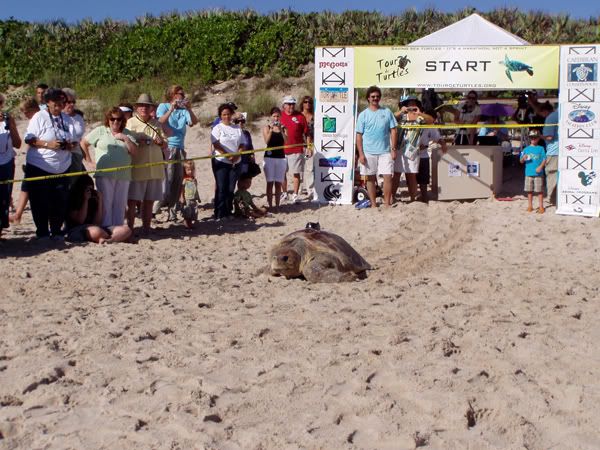
She headed south to Florida a few weeks back and has been staying close to the Brevard coast. Turtles normally return to the beach where they first hatched to lay their own eggs and loggerheads are known to lay eggs about every two to three years. So it would seem that her biological clock is due for another round of nests.
Johnson noted, though, that no one has confirmed a nest, because no one has yet caught up with her at a beach during the nocturnal egg-laying.
______________________________________________________________
On behalf of STC, thanks for continuing to cover sea turtles, Ludi!
Florida sea turtle supporters:
We are passing this alert from 1000 Friends of Florida on to our friends and supporters and recommend you take action as soon as possible. As many of you know, the Florida legislature is focused on cutting the budgets of state regulatory agencies and their environmental programs, streamlining or eliminating environmental regulations, and essentially gutting the growth management laws that have been in existence for decades.
As the legislative session winds down there are many bills that will reduce or eliminate environmental protections for surface and marine waters, wetlands, coastal habitats, sea grass beds, and wildlife. The alert below addresses two of the worst bills working their way through the legislature and what you can do to reduce the potential harm to Florida’s rich environment.
Sea Turtle Conservancy has been actively involved in this legislation and working with its partners in the environmental community to make this legislation better. We have offered amendments to improve these bills in ways that would ensure protection for sea turtle nesting beaches. Unfortunately it has been a difficult uphill battle. We are now asking for your help. The issues and the bills are complicated. Please read the alert below and take action:

While the schedule has not yet been released, the Senate Budget Committee is expected to pass the growth management bill, SB 1122, on Thursday, April 28. SB 1122 will then be ready for a floor vote by the full Senate sometime next week.
Representatives of Florida’s leading planning and conservation organizations, including 1000 Friends of Florida, Audubon of Florida, the Everglades Foundation, Florida Wildlife Federation, National Parks Conservation Association, Sierra Club, and The Nature Conservancy, have been consulting with key Senate leadership on growth management and have come to the conclusion that sweeping growth management legislation will pass this session despite strenuous objections. While it has many flaws, SB 1122 is clearly preferable to the House companion bill, HB 1729.
We are asking you to call your Senator as soon as possible to prevent damaging changes to SB 1122 when it comes up for a vote by the full Senate next week. Click here to find your Senator. Please ask your Senator to:
(1) Keep intact the existing SB 1122 language on the expedited review/alternative review process. The Senate version provides for fairer citizen challenge standards on plan amendments, and gives smaller local governments the option of keeping the current and more comprehensive plan amendment process; and
(2) Not allow “developer giveaways” on large scale projects (known as DRIs) to be amended on to SB 1122. These damaging amendments would allow a 150 percent increase in the size of projects that would be exempted from the state DRI review process, a 100 percent increase in the allowance for large scale changes to DRIs that do not require additional DRI review, and outright exemptions from the DRI process for MINING, INDUSTRIAL, and HOTEL/MOTEL projects.
Stop a Monster Environmental Bill:
HB 991 by Rep. Jimmy Patronis includes a series of special interest changes to 34 different environmental laws undermining citizen protection rights from polluters. It would limit local regulation of mining operations, allow groundwater contamination from landfills, and increase development provisions in wetlands. More information will be released at a 10:30 a.m. press conference called by The Sierra Club, National Parks Conservation Association, Audubon of Florida and 1000 Friends of Florida. Conservation groups are calling on Senators to resist efforts to amend this bill’s bad provisions on to other proposed legislation.
While you are calling your Senator about halting the damaging growth management provisions outlined above, please also ask your Senator to not amend the harmful provisions from HB 991 onto other bills. Please also contact your Representative to oppose HB 991. To find your Representative, please click here and then click on the “Find Your Representative” icon.
In an effort to get the word out about endangered species and help make a difference through education, College Degree Net published a list with their choices for the Top 100 Animal Preservation Blogs.
Here is what they had to say about Sea Turtle Conservancy’s blog:
“Fortunately, visibility for the need to protect sea turtles has boomed recently. This blog helps you direct your concern to practical and effective modes of support.”
Thanks for the kudos College Degree Net!
At the end of September 2010, STC initiated the construction of a Education Kiosk in Tortuguero, Costa Rica. The building is constructed with concrete floor, a wooden frame and a traditional thatched roof made with the leaves of a local palm species known as the royal palm tree, Manicaria saccifera.
The goal this new facility is to offer a better learning experience for tourists and the Tortuguero Community. The Education Kiosk will feature an informative video, information panel displays and serve as a meeting facility for the local community.
STC was able to build this facility thanks to support from Tourism Cares and three French volunteers who dedicated a month of sweat and expertise.
— Update from the staff in Tortuguero, Costa Rica
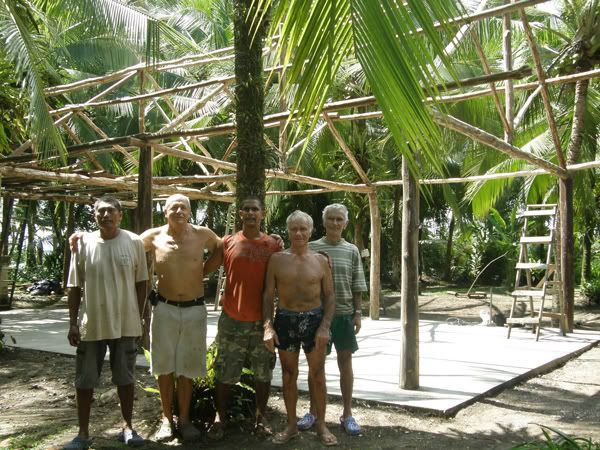
From left to right: Ivan (STC staff), Alain, Jose (STC staff), Rene and Robert
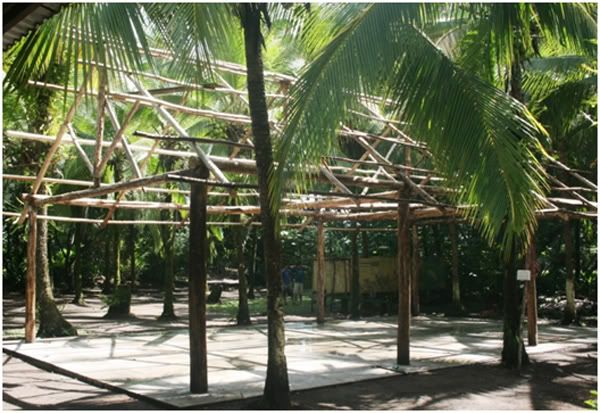
Got New Year’s resolutions on the mind? Get organized with the 2011 Sea Turtle Scenes Calendar featuring the winners from STC’s calendar contest. Click here to get your calendar today!
To see see the individual pictures and names of winning photographers, please visit our STC page on Facebook.

Every now and then, we get a letter that touches our hearts. This one came just in time for the holidays, and we wanted to share it with our sea turtle fans.
Sammy donated $83 for the holidays that he collected from working at his lemonade/hot chocolate stand. Along with his donation, he sent us a letter and a decorated envelope.
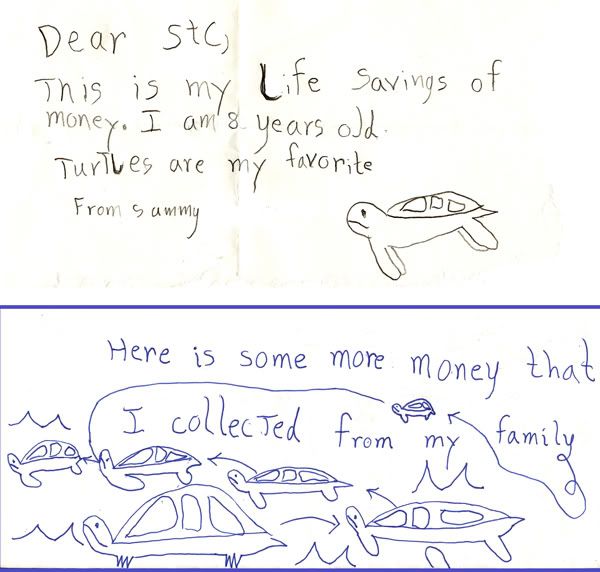
Sammy at his hot chocolate/coffee stand
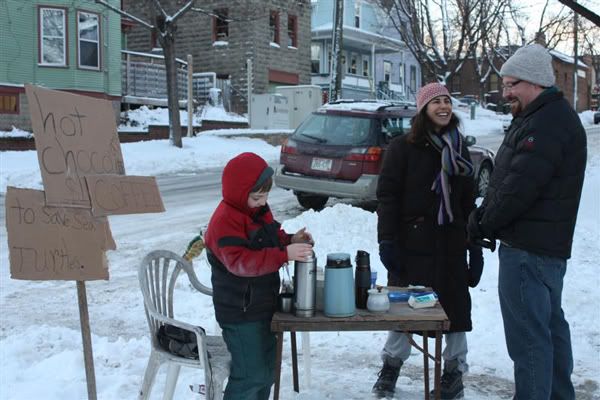
Thanks Sammy for spreading sea turtle love this holiday season!
From the staff at STC
After years of working in the magazine industry, Julie Schlosser and Lee Clifford decided to transform their passion for doing good into action.
They formed Altruette, a philanthropic line of charm bracelets.
“The Altruette concept couldn’t be simpler: 50% of the net profit from the sale of our charms goes directly to our cause partners,” said Julie.
Beyond financial support, wearing your Altruette turtle charm helps spread the word about sea turtle conservation in a fashion-forward way.
Visit Altruette.com today to check out their fabulous sea turtle charm benefitting STC!
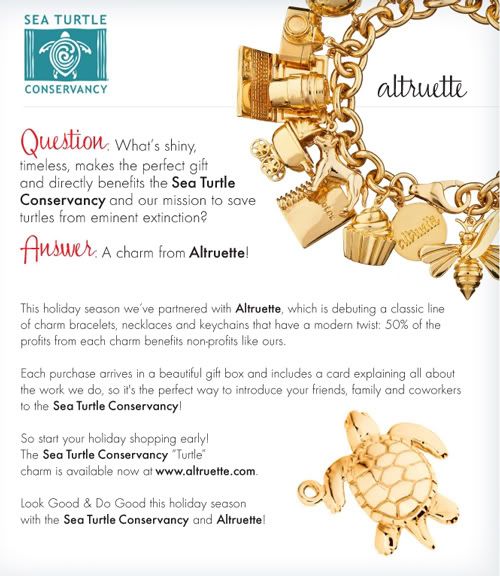
Since the oil spill, STC has doubled its efforts to reduce threats to sea turtles in Florida.
STC is traveling the state in search of problematic beachfront lights and working with residents, business owners and local sea turtle groups to install sea turtle-friendly lighting.
Supported by the National Fish and Wildlife Foundation, the program is reducing the negative impacts of lighting on sea turtles and hatchlings during nesting season.
Check out a before-and-after shot of this condo from the beach.
Before Window Tinting
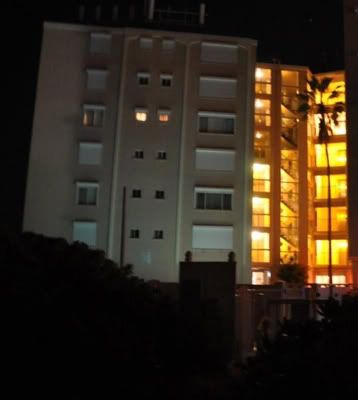
After Window Tinting
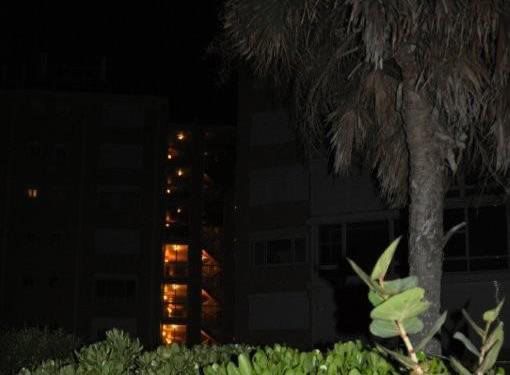
To many in Florida’s environmental community, the hastily called legislative Special Session in Tallahassee on November 16 was a warning shot across the bow. If all the rhetoric from legislators turns into action, the next few years spell trouble for Florida’s environment.
After the Nov 2. elections, the Florida legislature wasted no time in overriding the Governor’s veto of one of the worst environmental bills in years. House Bill 1565, passed last year by the legislature but vetoed by the governor, would bring state rulemaking—environmental and otherwise—to a grinding halt.
HB 1565 requires expensive economic analyses on any state agency rules, and requires any rules with more than a minimal estimated economic impact ($200,000 a year for 5 years) to return to the Legislature for ratification. Adding insult to injury, the bill was offered last year late in the legislative session with almost no public debate. In the days prior to the Special Session, conservationists, business owners and local government leaders urged legislators not to overturn Governor Crist’s veto. Those pleas were ignored.
Several legislators from both parties eloquently objected to the veto in floor debate. In the final vote a very small handful of legislators voted nay but, both houses overwhelmingly voted to override Crist’s veto, making this new law effective immediately.
In a follow up article in the Tallahassee Democrat, both sides offered comments on what this vote means. “This is literally across the board. This would change the way government operates,” said Frank Matthews, a prominent Tallahassee lobbyist for the Association of Florida Community Developers.
Audubon of Florida Executive Director Eric Draper stated, “From the public health and safety standpoint, this is the worst possible thing they could come up with. This may be what they want to do, just shut down government altogether.”
Crist justified his veto last year by saying this would result in a power grab by the legislature of executive authority over state agencies. Florida’s environmental agencies in responding to the bill, reported that almost all agency rules concerning environmental, growth management, water management and related issues will “trip the threshold” requiring approval from the legislature. The veto override was expected by this new legislature. Its anti-government regulation philosophy is closely aligned with the sentiments repeatedly expressed by the new Governor-elect.
I do not know how this will impact beach and turtle protection. But it could potentially impact everything from sea wall permitting to lighting ordinances. It will certainly have a chilling effect on issuing any future environmental regulations. Before DEP can issue a new regulation on anything, lets say beach raking to protect nesting, the agency would have to conduct an economic analysis. If the cost to implement the new regulation is over 200k statewide (remember this is a very large state so almost any rule could cost at least this much to implement) then the regulation would have to go to the legislature for hearings, analysis and approval. This will likely open up agency rule making to extensive special interest lobbying, delaying ratification for years.
The legislature has effectively taken executive branch authority for rule making away from the governor and state agencies and placed it in the hands of what some consider the most conservative legislature since reconstruction.
Gary Appelson
Policy Coordinator
I recently was invited to join a team of veterinarians and biologists working for NOAA and the BP oil spill Unified Command on a trip into the Gulf of Mexico to document and rescue sea turtles impacted by oil. The trip also gave me an opportunity to observe first-hand the current status of ocean-surface conditions and the availability of suitable sea turtle habitat in that region of the Gulf.
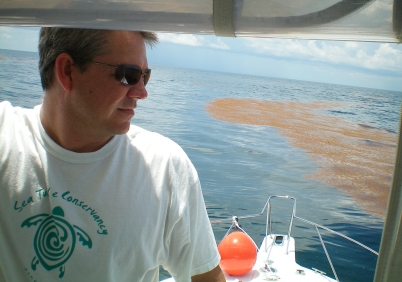 The 12-hour voyage departed from Venice, Louisiana, a small fishing community located at the southernmost point of land where the Mississippi River spills into the Gulf. Joining me on the trip were Dr. Brian Stacy, a NOAA veterinarian based at the University of Florida who has been coordinating sea turtle rescue efforts in the waters south of New Orleans and Dr. Joe Flanagan (a vet from the Houston Zoo). Also participating was Jonathan Gorham of In-water Research Group and representatives from two other conservation organizations (Chris Pincetich of the Sea Turtle Restoration Project and John Hammond with the National Wildlife Federation). Our primary task was to locate and rescue any sea turtles that might have been impacted by the oil spill.
The 12-hour voyage departed from Venice, Louisiana, a small fishing community located at the southernmost point of land where the Mississippi River spills into the Gulf. Joining me on the trip were Dr. Brian Stacy, a NOAA veterinarian based at the University of Florida who has been coordinating sea turtle rescue efforts in the waters south of New Orleans and Dr. Joe Flanagan (a vet from the Houston Zoo). Also participating was Jonathan Gorham of In-water Research Group and representatives from two other conservation organizations (Chris Pincetich of the Sea Turtle Restoration Project and John Hammond with the National Wildlife Federation). Our primary task was to locate and rescue any sea turtles that might have been impacted by the oil spill.
Rescue efforts such as this have been underway since shortly after the spill began, and they continue out of several port cities around the Gulf. Since the start of the disaster at the end of April, nearly 1,000 sea turtles have either stranded on Gulf Coast shores or have been recovered at sea through rescue efforts such as this.
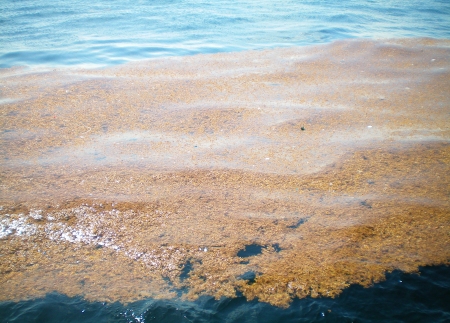 Our trip took us about 50 miles into the Gulf, where we began to spot mats of floating sargassum weed-an important pelagic habitat for both juvenile and hatchling sea turtles. Aside from tiny pieces of plastic and other types of common marine debris mixed in with the sargassum, the habitat we encountered appeared quite healthy. In fact, the mats were teaming with fish and other important marine species such as small shrimp, crabs and other vertebrates and invertebrates that sea turtles feed upon. Over the course of the day we also spotted and recovered two juvenile Kemp’s ridleys that showed no sign of having come in contact with oil.
Our trip took us about 50 miles into the Gulf, where we began to spot mats of floating sargassum weed-an important pelagic habitat for both juvenile and hatchling sea turtles. Aside from tiny pieces of plastic and other types of common marine debris mixed in with the sargassum, the habitat we encountered appeared quite healthy. In fact, the mats were teaming with fish and other important marine species such as small shrimp, crabs and other vertebrates and invertebrates that sea turtles feed upon. Over the course of the day we also spotted and recovered two juvenile Kemp’s ridleys that showed no sign of having come in contact with oil.
Considering that this very region of the Gulf was once thickly coated with oil, it seems most likely to me that the sargassum we encountered had drifted into the area, likely from the west, where it never came in contact with oil. Since the beginning of the spill, large amounts of oil-soaked sargassum have been corralled and burned by BP and its contractors. An undetermined amount of oil-soaked sargassum also has died and sunk below the surface by now. In this way, a substantial amount of important turtle habitat has been eliminated from the Gulf. However, this trip gave me great hope that sea turtles and their sargassum habitat are moving back into the region, but full recovery will take significantly longer.
My most striking memory from the trip is the complete absence of oil on the surface, despite our close proximity to the Deepwater Horizon oil spill site. On one hand I found it encouraging that the habitat, at least on the surface, appeared healthy. Unfortunately, conditions on the surface don’t tell the entire story about how oil and chemicals used to disburse the spill continue to impact the wildlife and ecology of the Gulf of Mexico. For government and non-government biologists alike, this remains a major concern, and research on what is happening below the surface needs to continue.
Based on my observations on this day and in this location, the surface habitat for sea turtles appears to be recovering a lot faster than most people, including me, thought would be possible. NOAA and other personnel responding to oil-impacted sea turtles are suggesting that their efforts to recover turtles at sea will soon wind down. While in hindsight it would have been better if more boats and rescue personnel had been in place to rescue turtles at the height of the spill, I can’t find fault with agency plans to scale back now. In fact, at this point chasing little Kemp’s ridleys out of healthy habitat seems more intrusive than helpful. Other threats to sea turtles, and especially the risk posed by the reopening of shrimp trawling in Louisiana waters, where state law does not require shrimpers to use Turtle Excluder Devices, presents a more significant survival threat to both loggerheads and Kemp’s ridleys. As efforts to rescue oil-impacted sea turtles wind down, state and federal regulators need to focus on bringing Louisiana commercial fishing regulations into the 21st century, where the harvesting of shrimp is done in ways that safeguard sea turtles and other common bycatch.
David Godfrey
STC Executive Director
The recent Deepwater Horizon disaster has focused attention on the value and importance of beaches to local economies, the quality of life, and as wildlife habitat. It has also ignited a discussion on whether to permanently ban oil drilling in Florida waters. Florida statutory laws prohibit nearshore drilling (within 10 miles on the Gulf coast and within 3 miles on the Atlantic coast), but state laws can easily be changed. Indeed, the Florida legislature had been working diligently to do away with this statutory ban and only recently abandoned this effort as the Deepwater Horizon continued to gush crude. Consequently, many policy makers and Floridians have been pushing for a more permanent “constitutional ban” that could only be changed by the voters and could not be overturned by the pro-drilling Florida legislature. Sea Turtle Conservancy (STC) has steadfastly opposed the legislature’s efforts to allow drilling while also advocating for a more permanent constitutional ban.
In early July, Governor Charlie Crist called for a legislative special session for the purpose of placing a constitutional amendment to ban drilling onto the November ballot. In an effort to gauge public support and hopefully convince legislators to support the governor, STC and four other Florida conservation groups conducted a survey of likely Florida voters. The survey results, released on July 19, just before the Governor’s special session, found that a majority of Floridians now oppose drilling in Florida’s near shore waters and a whopping 71% of Florida voters would like the opportunity to vote on a constitutional ban. A press conference was held in Tallahassee announcing the poll’s results.
The Special Session was called to order on July 20th. It lasted just 29 minutes, with the legislature ignoring the Governor’s efforts by adjourning without any hearings or votes on placing a constitutional ban on the ballot. Several conservation groups are now initiating a statewide citizen petition drive to place the constitutional amendment on the ballot. The STC will be strongly supporting this effort.
In other beach related news, the U.S. Supreme Court issued a ruling on June 17 upholding Florida’s beach restoration program. This very complicated case was initiated in 2004 when some beachfront property owners in the Florida Panhandle sued to stop the state from rebuilding their eroded beaches. When a “critically eroded” Florida beach is rebuilt, the new sand is considered to be public property. Since this new sand is placed between the old high tide line and the water, the beach front property owner’s property no longer touches the water and the new public sand effectively moves the high tide line further seaward. In a very simplified summation: property owners sued claiming the renourishment project resulted in a taking without compensation of their “riparian” rights to have their land touch the water. The case was appealed to the Florida Supreme Court in 2007 and eventually went to the U.S. Supreme Court. The Court ruled that the state’s beach nourishment program did not constitute a taking of private property without just compensation in violation of the U.S. Constitution. Had the property owners prevailed, Floridians would have had to pay first for the sand and then also for the right to place sand on a beach to protect the upland development. This could have effectively killed the state’s beach restoration program.
STC is involved in a myriad of issues addressing the long-term protection of Florida’s beaches. Beach management and protection is very complicated and attempts to balance environmental needs, public recreation, tourism, and protection of upland property. It is our mission to ensure the long term protection and health of Florida’s sea turtle nesting beaches and associated nearshore marine habitats.
Sea turtle nesting season is our favorite time at CCC, and this year we have been busy attending festivals throughout Florida to spread the word about sea turtle conservation. In addition to community outreach, CCC recently invited board members and volunteers on a trip to the Indian River Lagoon in Melbourne Beach, Florida, to observe in-water sea turtle research first hand. Thanks to our wonderful research partners at University of Central Florida, Dr. Llew Ehrhart and Dean Bagley, we were able to get up close with juvenile green and sub-adult loggerhead turtles. Check out the pictures of the lagoon trip and other community outreach events!
Dr. Ehrhart presenting to staff and volunteers
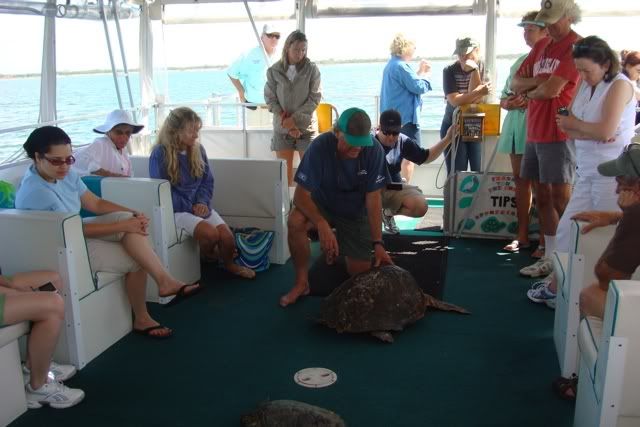
Juvenile Green Turtle
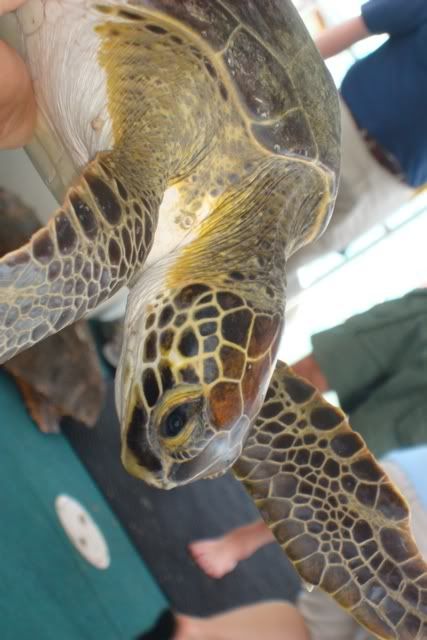
Board President Laura Forte holding a small green turtle

Dean Bagley and the UCF Marine Turtle Research Team
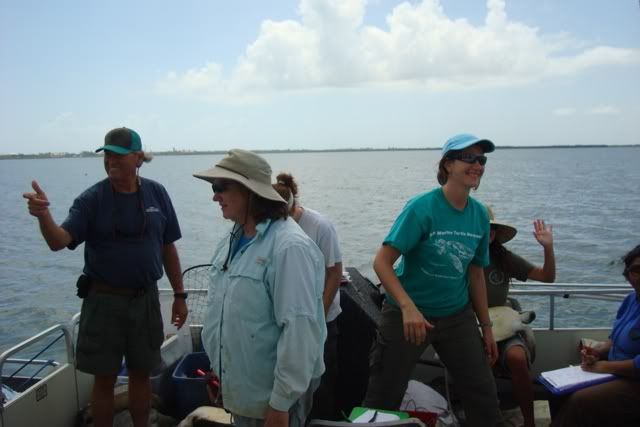
Baby Sam looking at the large green turtle
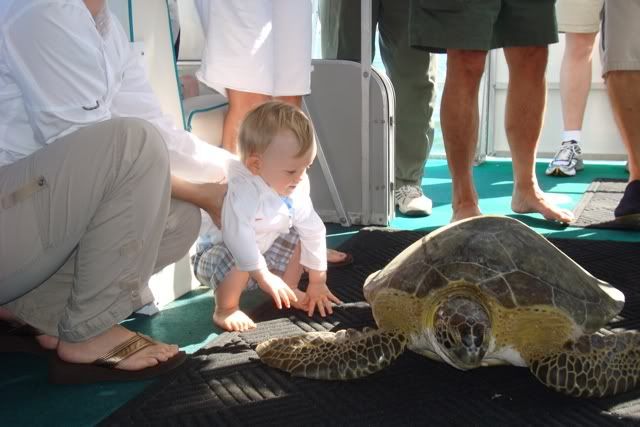
Volunteers pose with Communications Coordinator Rocio Johnson
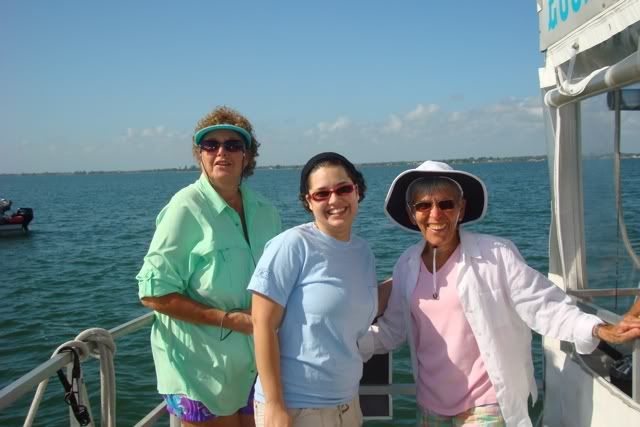
CCC exhibit at MarineQuest in St. Petersburge
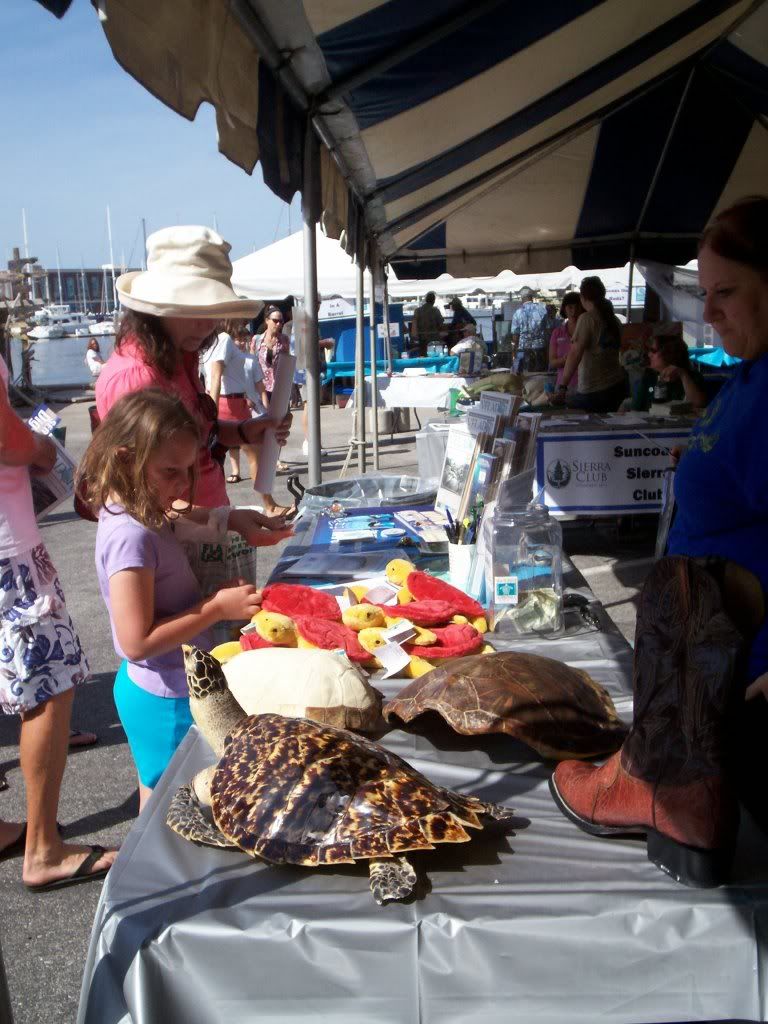
Kids working on the Causes Quilt for Tour de Turtles
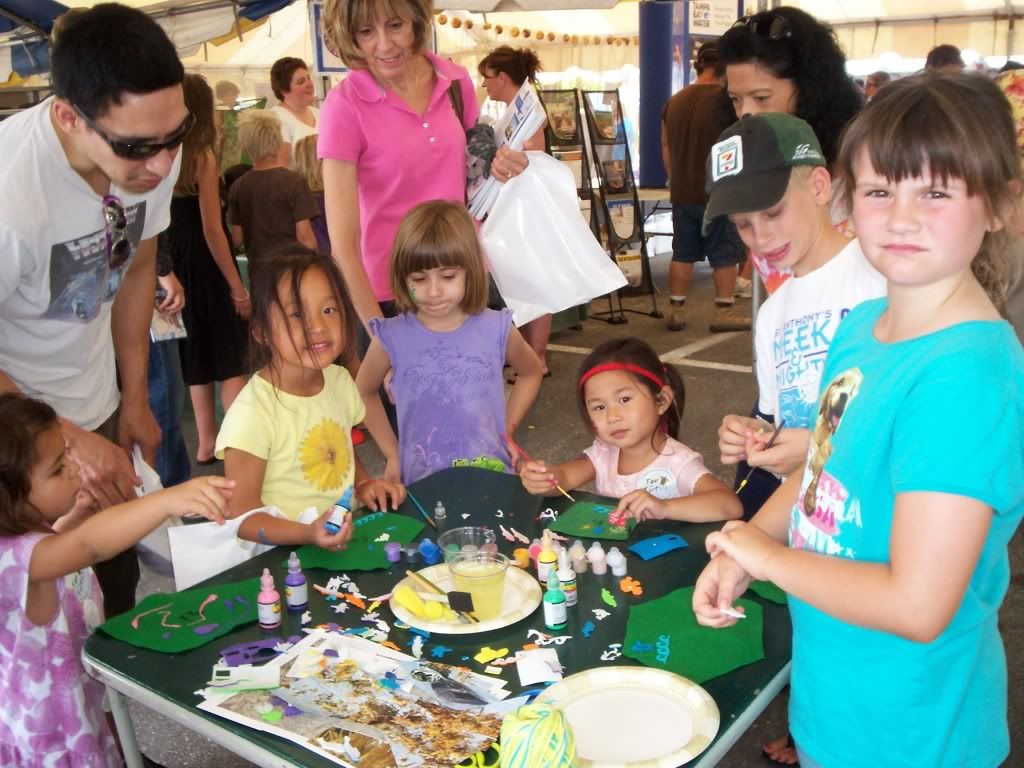
Parents and child learning about sea turtle threats
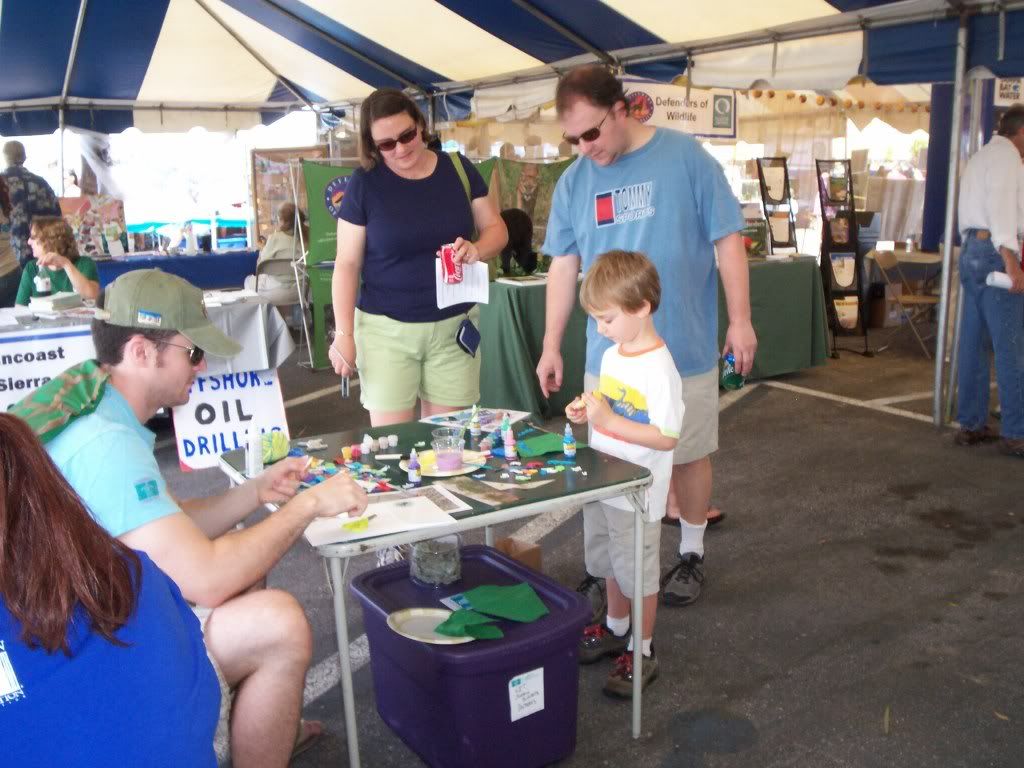
Quilt highlights sea turtle threats
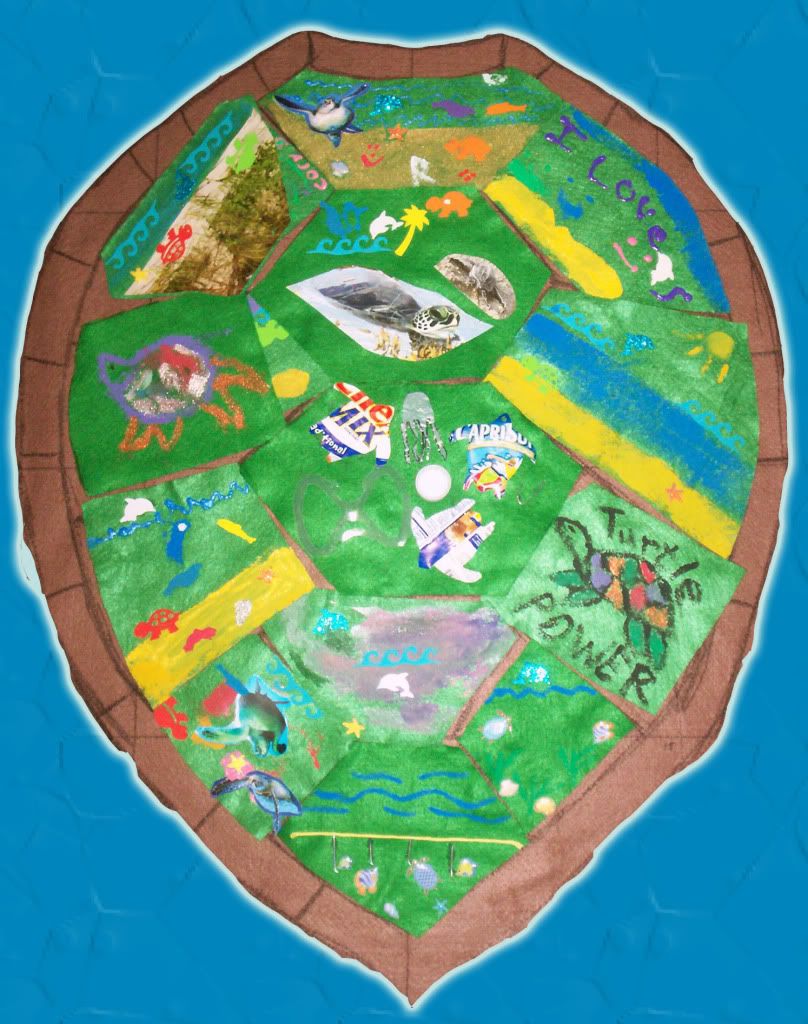
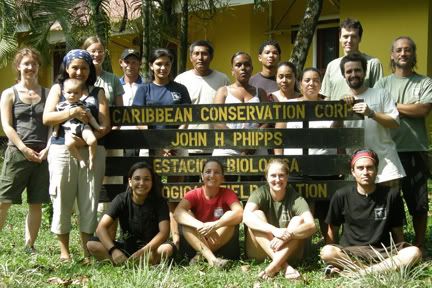
At the beginning of March, CCC staff and the new research assistants gathered at the Tortuguero Research Station for the start of a new leatherback nesting season.
We welcome the new CCC family members and are happy to see familiar faces back at the station this year. The members of the Tortuguero family are: Xavier Debade (Station Manager – France), Clare Atkinson (Field Coordinator – England), Dagnia Nolasco (Education and Outreach Coordinator – Peru), Perla Servian (Visitor Center Coordinator – Paraguay), Ivan Ramos (Track Surveyor, Boat Captain and Maintenance – Costa Rica), Juanita Fernández (Cook – Nicaragua), and Isabel Beckford & Jackeline Brandt (Cleaning and Laundry – Costa Rica).
This year we have eight Research Assistants from eight different countries; these unconditional turtle lovers are leaving behind their home comforts to give us their time and energy for three months: Alex (Canada), Arturo (USA), Ernesto (Mexico), Luisa (Venezuela), Marlene (Germany), Mónica (Colombia), Santiago (Spain), and Tim (England). We also have a Volunteer Assistant, Indira Torrez, who is from the community of Tortuguero; she participated in our Junior Research Assistant Program in 2008 and is now helping out with monitoring and environmental education activities. And we can’t forget our youngest turtler, 6-month-old Yana (French/Peruvian)!
After two weeks of intensive training, the Research Assistants and the field coordinator have been conducting nightly patrols and track surveys of the entire beach every three days.
Here are the turtle encounters during 203 hours of night patrols in March:
15 leatherback turtles – 6 new and 9 with old tags
7 green turtles – 6 new and 1 with old tags
Jaguar kills:
Two leatherbacks in two weeks – one originally tagged in Pacuare in 2005
6 green turtles – one tagged in Tortuguero in 2006
One of our research assistants (Ernesto) was lucky enough to see a jaguar while he was doing a track survey one morning; it was in the vegetation close to a freshly killed green turtle.
Our first Eco-volunteers have arrived, and are settling into the routine of early morning track surveys and late night patrols; and the turtles are starting to nest more frequently now too. We’ll keep you updated on how things progress during the season, and will be sure to share any exciting tales from the beach.
Dagnia and Clare
CCC Research Station